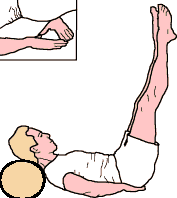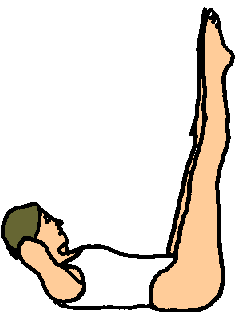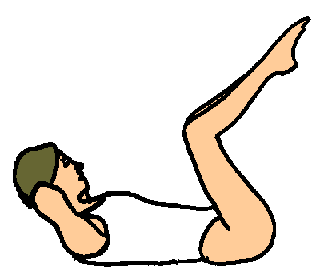|
|
|---|
(1) Learning Pilates from other than a real live instructor is not easy,
and does carry some slight risks. You should (in addition to these notes)
attend a course of certified Pilates mat sessions.
This is the safest way to learn, and it's also a lot of fun!
(2) Please ensure that you are competent in "Pilates Contrology".
(free pdf e-book).
Setup for The Double Leg Stretch:
- Lie on your back.
- Head up, eyes on your belly.
- Hug both knees to your chest.
- Scoop your abs; clench your butt and roll your shoulder blades away from your ears.
Action for The Double Leg Stretch:
- Exhale into the hug.
- Exhale and lengthen your arms back and legs forward at an angle of 45 degrees
- Circle your arms around to the side, and exhale to hug (not pictured).
Classic Pilates Cueing:
- Zip up! Eyes on the belly!
- Exhale, hug it in!
- Inhale, long and thin!
(Classical Pilates Technique: The Double Leg Stretch, Scroll right>>>...)
|
Classical Pilates for Beginners:
The Double Leg Stretch
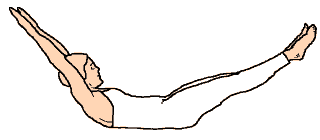
Level: Beginner, Repetitions: 6-10.
Previous Exercise:
The Single Leg Stretch-

(In the Classical Pilates mat sequence, the Single Leg Stretch preceeds The Double Leg Stretch).
|
|
Next Exercise:
Single Straight Leg Stretch-
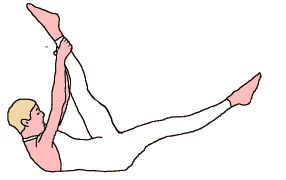
Lengthen your legs up in pilates point and hold one ankle with both hands...
|
Classical Pilates Technique: The Double Leg Stretch, © Bruce Thomson, EasyVigour Project
|
|
Purposes:
- Builds abdominal endurance. Endurance is a very important factor in avoiding back pain.
- Teaches working the powerhouse and maintaining alignment.
Precision Points:
- Perfectly still torso - no buckling, no side roll.
- The feet move in and out in a straight line- no side bending!
- Shoulders wide, blades down, tips on the mat.
- Eyes on the belly!
- Hug legs in strong, keep the sacrum on mat.
Modifications:
Don't let an injury or weakness stop you!
There is always a modification. Take your time and find the right one for you.
If in doubt, seek advice!
- Weak abdomen - extend both arms and legs up toward the ceiling.
- Back pain or pain in front of hip - place hands under pelvis,
keep knees slightly bent.
- Weak neck - stacked hands, or a pillow underneath the head.
|



